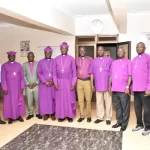President Yoweri Museveni has endorsed the creation of three new districts and the elevation of Tororo Municipality to a neutral city, signaling a shift toward administrative solutions to ethnic tensions.
President Yoweri Museveni has taken a bold step to resolve the long-standing conflict between the Iteso and Japadhola communities in Tororo by restructuring the region’s administrative boundaries.
During a strategic meeting at State House Entebbe, the President proposed a transformative plan: turning Tororo Municipality into a neutral city and carving out three new districts Mukuju, Mulanda, and a third yet-to-be-named district—as a way to fairly distribute representation and services.
“This is not about territory. This is about access to services and development for all,” Museveni emphasized. “Let Tororo become a neutral city. We shall create new districts to accommodate both sides.”
The Iteso community is expected to maintain Mukuju and benefit from the services of the proposed Tororo City, while the Japadhola community would receive Mulanda and the unnamed district. Museveni advised both groups to agree peacefully on the name of the third district.
The conflict, rooted in competing claims over Tororo’s identity and governance, has strained social harmony and slowed regional development. Museveni criticized the political class for fueling division instead of promoting inclusive growth. “You are wasting valuable time fighting over land and identity when you should be building schools, hospitals, and roads,” he said.
The President’s solution puts emphasis on de-ethnicizing politics through structural reforms and reminds leaders of their duty to serve the people—not inflame old wounds. The proposed changes are now expected to be reviewed by Parliament and local stakeholders for implementation.
If adopted, Museveni’s proposal could not only end one of Uganda’s longest-running ethnic disputes but also serve as a blueprint for resolving similar tensions in other regions.







